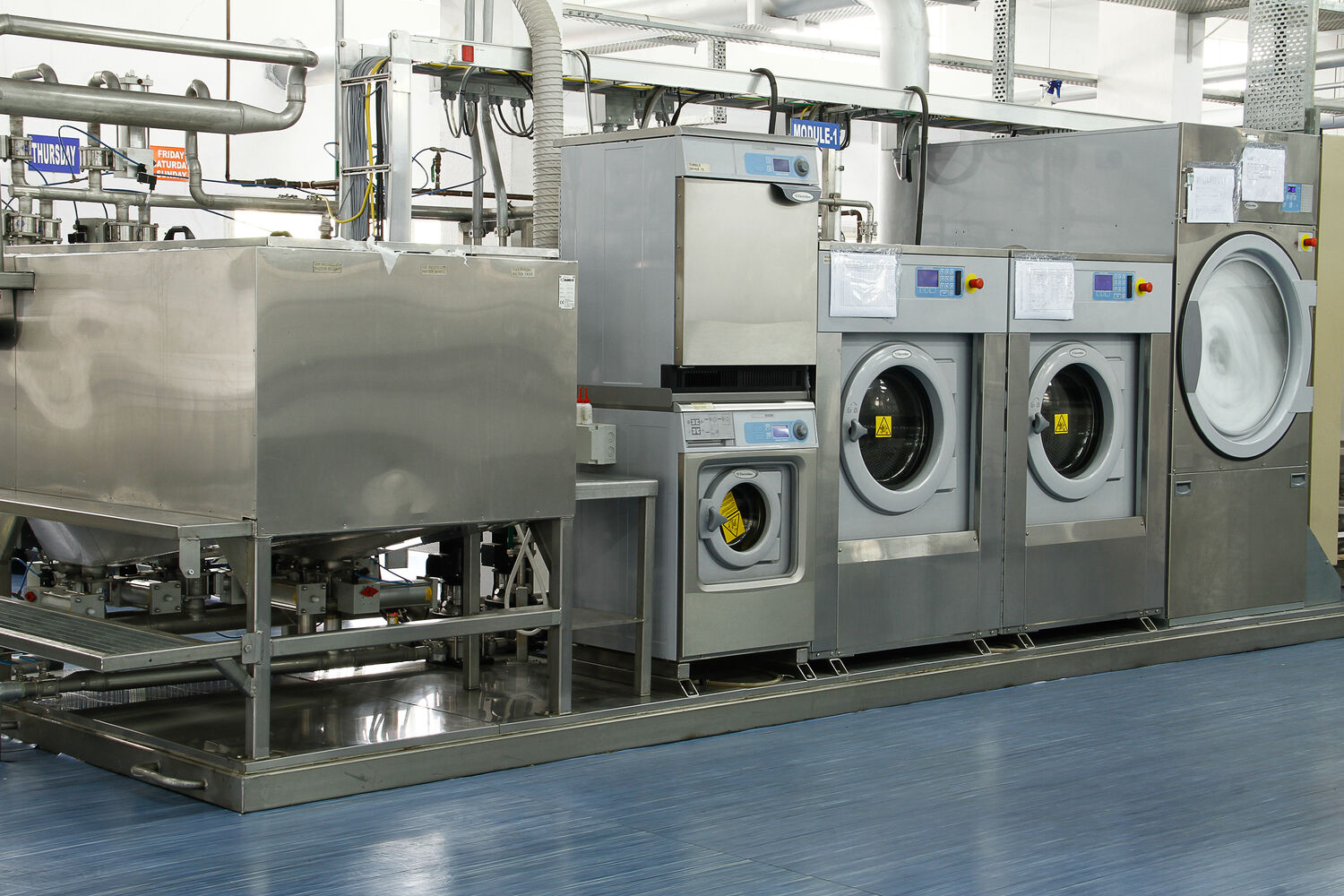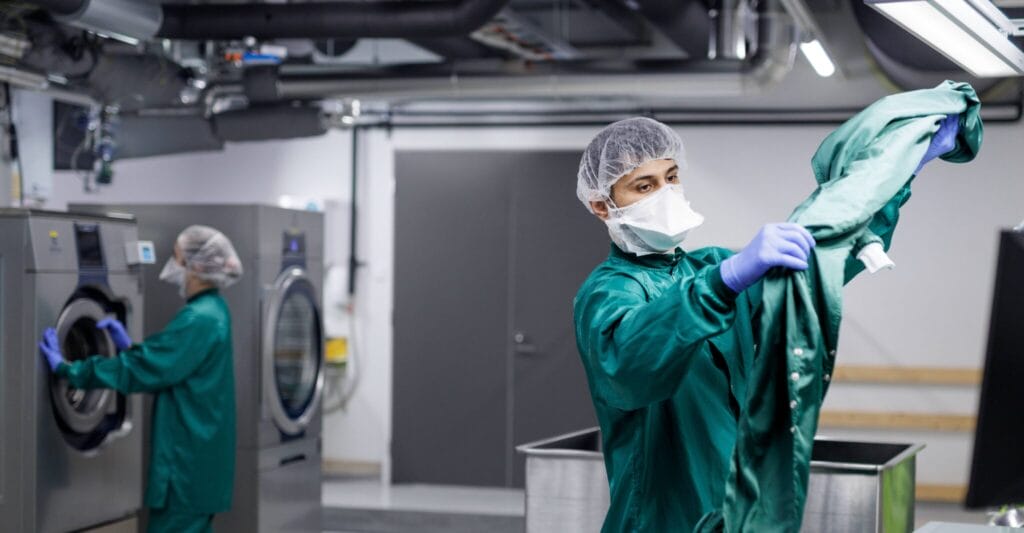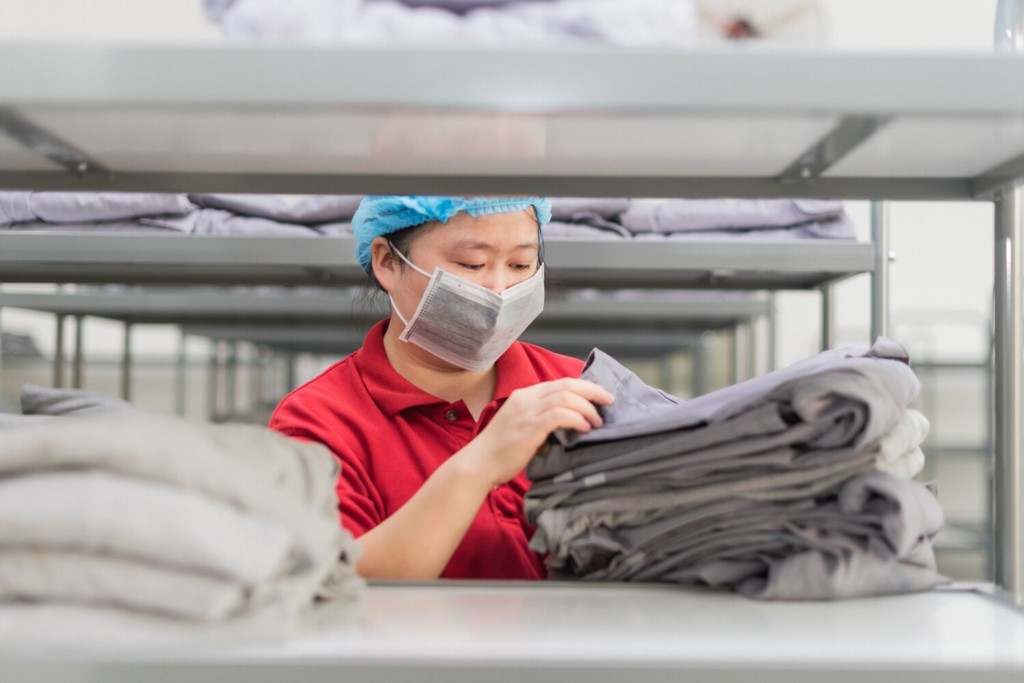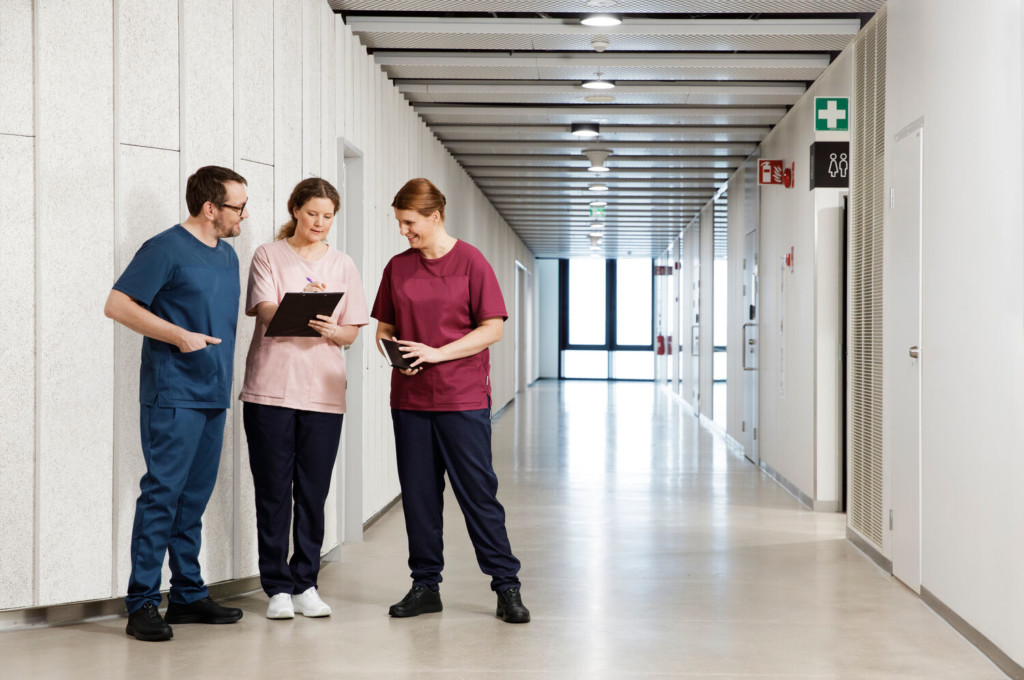
Textile cleaning standards ensure biocontamination control
At Lindström, high textile cleaning standards is a key priority. Our Group’s management system includes the European standard EN 14065 Textiles – laundry processed textiles, biocontamination control system. By applying this standard, we ensure the designated level of microbiological quality that corresponds with the intended use of the textiles.
Standard EN 14065 applies to textiles that are used in the pharmaceutical, medical, cosmetic, and food industries. All our workwear, roll towel, restaurant, and hotel textile laundries comply with EN 14065 textile cleaning standards. The certificate also covers our laundries’ internal hygiene monitoring system: Risk Analysis of Biocontamination control (RABC). We also require our subcontracting laundries to have an appropriate control system for microbiological quality.
During the COVID-19 pandemic we reviewed all our instructions and ways of working in each part of the service chain to make sure we can shield our process from the virus and guarantee a safe environment for our customers and employees.
Hygiene principles and textile cleaning standards in our operations
1. Certified and validated washing processes ensure textile disinfection
Detergent suppliers provide us with certified washing processes. We reach the appropriate level of hygiene for textiles through thermal disinfection (minimum 70°C/10 min), or by chemothermal disinfection with the right combination of disinfecting chemicals and washing conditions during the laundering process. With chemothermal disinfection, lower temperatures can be used, which saves energy during the process. We also regularly validate our washing programs in each laundry.
2. Preventive actions and process controls prevent biocontamination after the washing process
We ensure the effectiveness of our service processes with process control measurements and regular microbiological test samples at critical control points:
- Washing process measurement (pH, temperature, alkalinity, bleaching agent).
- Contact sample tests (total bacterial count) from washed and finished textiles, and other defined control points within the process.
3. Personnel instructions keep personnel aware of their affect to hygiene
After washing it is essential to protect the textiles from recontamination. We achieve this by following the correct working methods and instructions. This includes every step during the drying, inspecting, repairing, and packing stages, as well as when moving between different areas of cleanliness. We monitor compliance with these instructions with internal audits. Every employee is aware of the importance of their activities and how they contribute to meeting the microbiological objectives. We ensure this by training our personnel and partners.
4. Delivery service transports textiles hygienically to customers
In our delivery service we keep clean and dirty textiles separated. This way, we avoid re-contaminating the clean textiles with the dirty ones. To protect textiles during transportation, we pack all textiles in laundry bags or hoods inside roll containers. We clean each laundry bag or hood after every use. Infected laundry is separately handled according to the instructions provided to the customer. We require every service representative to follow the hygiene instructions regarding personal hygiene.




